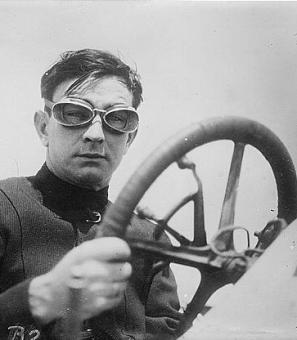The Shotgun Stalker Terrorizes Columbia Heights and Mount Pleasant, 1993
The year was 1993. Spring had come to Washington and the cherry blossoms were blooming, but residents of Mount Pleasant and Columbia Heights were on edge. For over a month, a gunman had been on the loose in their neighborhood, targeting pedestrians with a pump action shotgun. By the middle of April, the assailant – who was dubbed the “Shotgun Stalker” by local media outlets – had been linked to nine shootings, three of which were fatal.
Each incident was eerily similar: the stalker cruised the neighborhood in his car after dark, isolated a pedestrian and then fired at the person’s head. But yet it was all so… random. The victims varied in age, sex, ethnicity and occupation – there was no logic. After pulling the trigger the gunman would disappear, seemingly into thin air.
Police had been slow to connect the incidents, which began on February 23. In fact, the first three shootings were chalked up as drug-related crimes, stemming from turf battles between dealers – a tragic but not altogether uncommon occurrence in Columbia Heights. Only after a woman was shot on March 17 in a more affluent section of neighboring Mount Pleasant where shootings were rare did authorities begin to suspect they were dealing with a serial killer.
On March 24, police announced that the crimes were linked and turned over the investigation to the Redrum unit, a task force of D.C. homicide detectives and federal drug agents that took its name—“murder” spelled in reverse—from a Stephen King horror story. The shootings, however, continued. On April 4, a woman was wounded when the shooter pulled up beside her and said, “April Fools,” before pulling the trigger. Six days later, two men were shot – one of whom died – and another man was targeted before he eluded the Stalker.
The community was scared and perplexed – and everyone had their own theory on who was behind the madness. As James O. Newman told a reporter, “It’s pretty gruesome. It’s weird. Anyway, he’s a nut. My opinion is, I think he lives in the neighborhood. He’s getting away too quick.”[1] (Seven of the first nine shootings occurred on or within a few blocks of Holmead Place NW, where Newman worked as an apartment manager.)
The Metropolitan Police stepped up patrols in the neighborhood and Chief Fred Thomas approved unlimited overtime for officers until the case was closed. As City Administrator Robert L. Mallett told the Post, “We will spend whatever it takes.”[2]
The commitment to stop to the terror extended to the federal government as well. On April 15, Attorney General Janet Reno visited an elementary school in Columbia Heights and told students and parents, “What we want to do is form a partnership on this particular case to do whatever we possibly can.”[3] Representative Eleanor Holmes Norton applauded Reno’s interest: “When I saw that the police were doing all that they could [to find the attacker], the only thing that seemed to be missing to me was something to bolster the morale of the citizens. And I’m telling you, when the nation’s chief law enforcement officer decides to come up here, it sends a message to the community that she is going to do whatever is necessary.”[3]
Based on interviews with survivors, the police released details on the car used in the attacks – a blue Toyota or Honda with a dark driver’s side door – and developed a computer enhanced sketch of the suspect, who was described as “a black male in his late twenties to early thirties with sharp, angular features.” Posters were plastered around the neighborhood and Washington Post publisher Donald Graham agreed to devote a half page of the paper to a large-scale print of the composite. Vehicles and individuals bearing any resemblance to the suspect were stopped for questioning.
Throughout the investigation, police begged for tips from the community, and reminded city residents that the case could turn at any moment from a tip, a lucky break or a mistake by the shooter. As it turned out, that’s exactly what happened, but not before one last deadly shooting spree.
Shortly after 1pm on Monday, April 19, shots rang out on Spring Place NW. As the would-be victim told police, “I turned around and saw the driver leaning toward me pointing something at me through the passenger side window. I ducked and heard a bang and felt ringing in my ear.”[4] The shots shattered a window two houses away. Moments later, the attacker turned onto Holmead Place and targeted a cyclist. When the man looked up and saw the shotgun, he dove off his bike and sprawled on the sidewalk behind a parked car. The blast sailed over his head. Seconds later, the stalker turned onto 13th St and shot 61-year-old Nello Hughes dead on the sidewalk.
But then – finally – police caught the break they were hoping for.
Moments after Hughes was shot, an off-duty officer named Kenneth Stewart noticed a blue Toyota driving erratically down Sherman Avenue. He followed it and en route, flagged down an on-duty patrol car. The two officers cornered the suspect in the parking lot at the Atlantic Plumbing Supply Company on Florida Avenue. A shotgun sat on the backseat of the vehicle. Officers arrested the driver, who they identified as James E. Swann, Jr. of Iselin, New Jersey.
At a news conference later that day, Metropolitan Police Chief Fred Thomas said the MPD was “quite confident” that Swann was the infamous shotgun stalker. Hundreds of people poured into the streets to celebrate what they hoped was the end of an eight week reign of terror.
But, amid the jubilation, there was also a sense of caution. Some wondered whether Swann was actually the Shotgun Stalker or whether he was a copycat shooter seeking attention. Along with so many other perplexing aspects of the case, it just didn’t make sense that the final shootings had occurred in broad daylight while the rest of the shootings had happened under the cover of darkness. Police maintained heightened patrols in Mount Pleasant and Columbia Heights following Swann’s arrest but, fortunately, there were no more shotgun shootings.
They had the right man. However, piecing together a motive for the seemingly random attacks proved difficult. As the Post described him, Swann was “a twice-fired security guard who, until recently, led an undistinguished life notable only for unpredictable and often strange behavior.”[5] He grew up and attended high school in New Jersey. After a stint in the Navy, he moved in with his sister at an Oxon Hill, Maryland apartment complex. Neighbors remembered him as a strange man who frequently paced the sidewalk, muttered to himself and shouted at squirrels. In 1992, Swann purchased the shotgun he would later use in the D.C. attacks at an Oxon Hill K-mart store. Several months later, his sister asked him to move out and he drifted between New Jersey, Philadelphia and Washington, apparently living in his car.
From these accounts, it seems Swann was a troubled individual. But what drove him to hunt people on the streets of D.C.?
One early law enforcement theory was that he hoped to exact revenge on a former coworker who had made fun of him and Swann believed the man lived in the Columbia Heights neighborhood. But Swann later described a more elaborate motive.
In interviews with psychiatrists who were trying to determine if he was fit to stand trial, the shotgun stalker told doctors he would “hear these voices and I wouldn’t know where they were coming from, and they would command me to hurt people, to kill people.” Swann claimed the voices told him to shoot people in Northwest Washington “in the name of” Malcolm X because they were somehow responsible for Malcolm’s 1965 assassination. “The chastisements,” as he called the voices, were all-consuming and would let up for a few days only after he killed someone.[6]
Experts for the defense and prosecution agreed that Swann was suffering from paranoid schizophrenia. He was declared not guilty by reason of insanity in September 1994 without a trial and confined to St. Elizabeths Hospital in Southeast Washington indefinitely. He remains there to this day.
Swann’s two month rampage included thirteen attacks, four deaths – including a February 26 shooting inside a barbershop, which was connected to Swann weeks after his arrest – and four woundings.
The deceased included:
- Julius “Jack” Bryant, 58, killed in the Safeway Barbershop on 11th St. NW on February 26.
- Elizabeth “Bessie” Hutson, 28, killed while walking her dogs in an alley paralleling Park Road NW in Mount Pleasant on March 23.
- Edwin Fleming, 35, killed at Holmead Pl. and Monroe St. NW on April 10.
- Nello Hughes, 61, killed on 13th St. NW on April 19.
R.I.P.
One last twist to the story: On February 6, 1993 – just two weeks before the first shooting – Prince George’s County police questioned Swann about his possible involvement in an incident in the county and seized his shotgun. The gun was returned a few days later when no charges were filed.
Footnotes
- ^ McCombs, Phil, “The Night Watch: A Porch-Seat View of the Street Stalked by the Killer,”The Washington Post, 16 Apr 1993: B1.
- ^ Thomas-Lester, Avis, “Search Turns to Garages,” The Washington Post, 17 Apr 1993: D1.
- a, b Duggan, Paul and James Ragland, “Reno Tours School in Columbia Heights, Justice Department ‘Taking Steps’,” The Washington Post, 16 Apr 1993: D1.
- ^ Kovaleski, Serge, “N.J. Man Arrested After Another Shotgun Slaying,” The Washington Post, 20 Apr 1993: A1.
- ^ Duggan, Paul and Marcia Slacum Greene, “A Man of Few Words, Often Odd Deeds,” The Washington Post, 21 Apr 1993: A1.
- ^ Duggan, Paul, “Shotgun Stalker Ruled Insane, Not Guilty,” The Washington Post, 27 Sep 1994: A1.


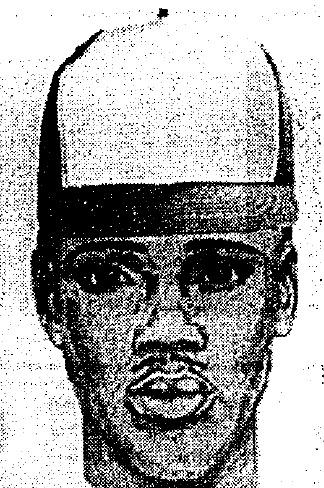
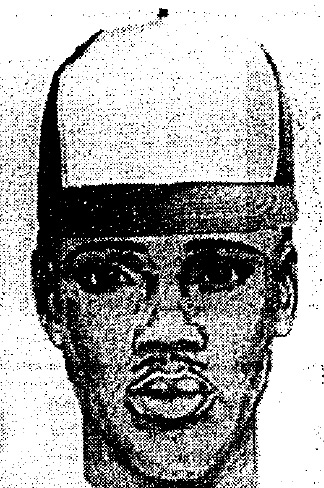
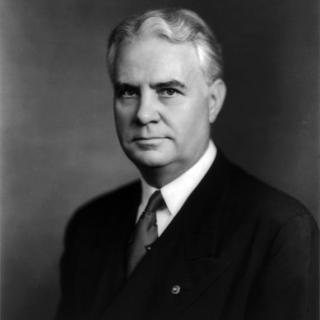
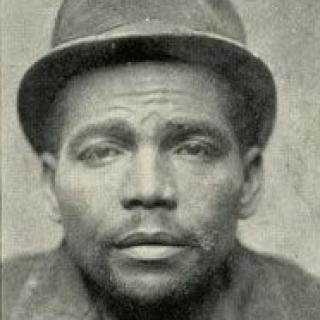

![Sketch of the mythical fuan by Pearson Scott Foresman. [Source: Wikipedia]](/sites/default/files/styles/crop_320x320/public/2023-10/Goatman_Wikipedia_Faun_2_%28PSF%29.png?h=64a074ff&itok=C9Qh-PE1)











